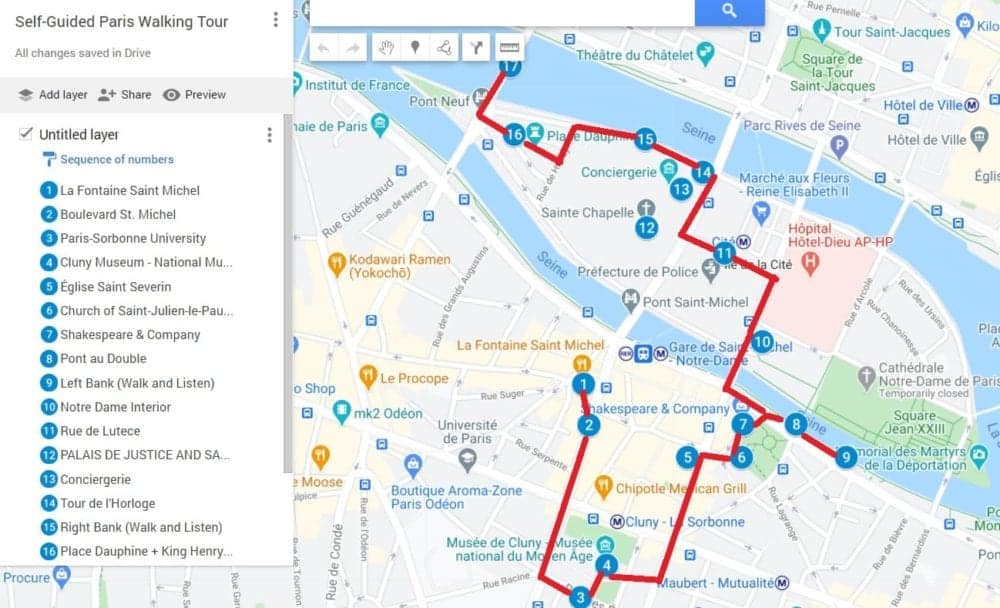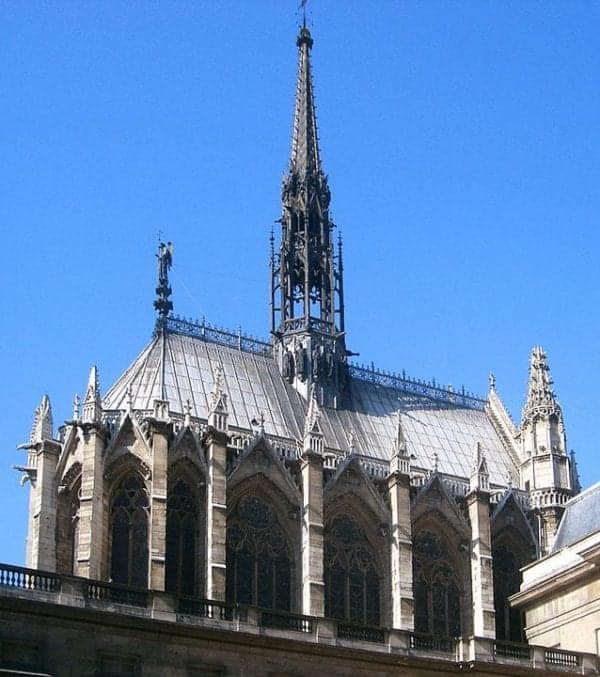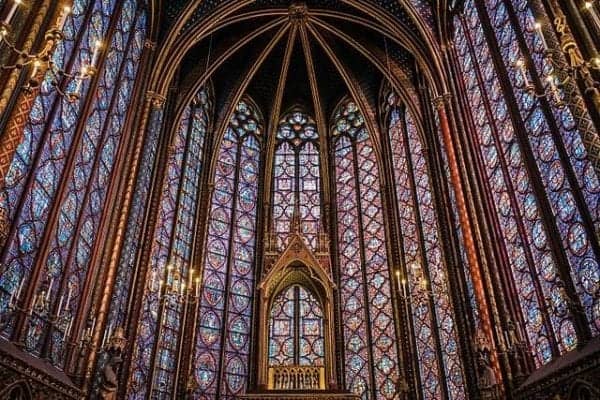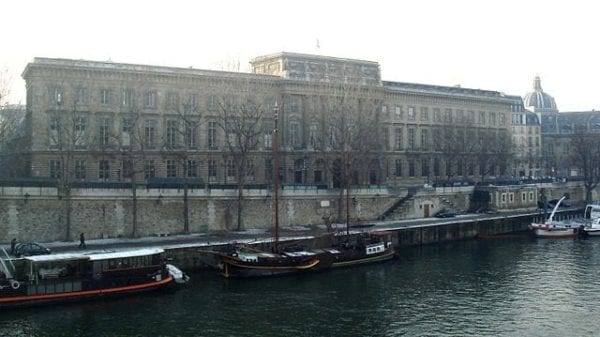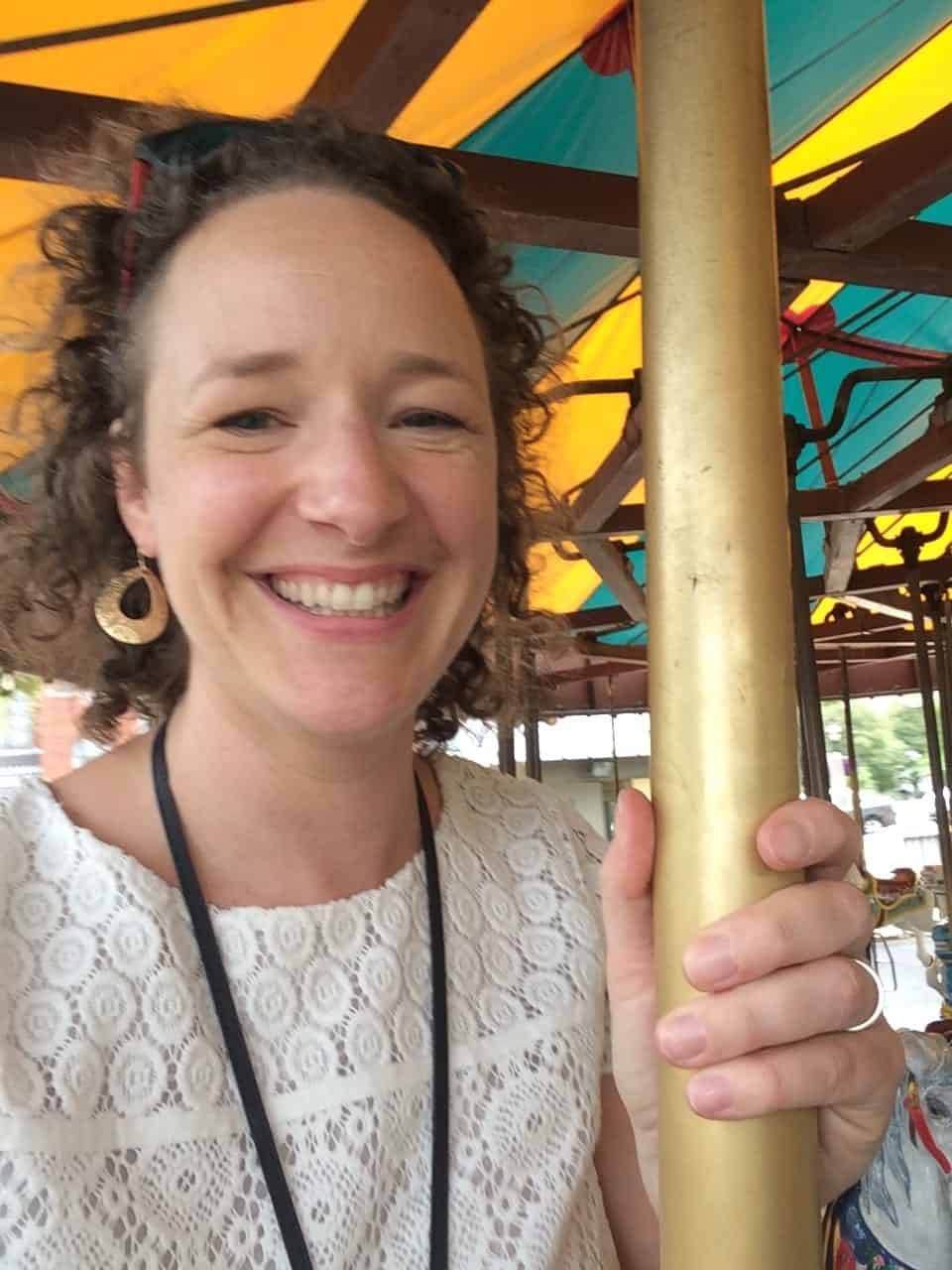In this post, you will find a free, self-guided walking tour of the historic heart of Paris, along with a map and a GPS-enabled audio option.
The route includes many locations we cover in our free guided walking tours, so we offer you lots of information based on our knowledge of the history of what you will be seeing in this self-guided tour.
This tour starts on the Left Bank in the Latin Quarter before exploring Île de la Cité and ends at the Louvre Museum.
When you are done with this self-guided tour, why not try our others?
Like this one, they come with maps, routes, and in some cases, audio tour versions.
You can use these to discover the city at your own pace or as a preview of what you will see on a live-guided tour, like our free walking tours of Paris.
Searching Availability...
SELF-GUIDED TOUR - HEART OF PARIS
The tour starts on the Left Bank in the Latin Quarter, passes through Île de la Cité and ends at the Louvre Museum.
The route is a little less than 3 kilometers (just under 2 miles).
If you'd like to enhance your experience, you might like to use our accompanying GPS-led audio tour, developed and narrated by one of our local tour guides, Andrew.
The audio tour is a more detailed version of the written information below. It costs just 2.99€ per download.
Here is a sample of the tour.
Click on the map to expand or to download it to your phone.
For directions between stops, use the map above or download a PDF version of this tour.
1. Place Saint-Michel
Place Saint-Michel is simple – a triangle between two streets, uniform buildings along both, designed by the same architect, a walk of smooth cobblestone.
The centerpiece is St. Michael defeating a devil; far above them are four statues symbolizing the four cardinal virtues of prudence, fortitude, temperance, and justice.
This monument came to be because of the 1848 Revolution and a cholera epidemic in Paris that followed it which killed thousands.

This idea of abstract concepts given human form had been popular during the Revolution, the big one, representing the kind of big virtues – like the Four Cardinal Virtues – that everyone could strive for, instead of a single human being whose actions and legacy would turn people against each other.
Simultaneous with the creation of Place Saint-Michel, Napoleon III’s renovation brought the Boulevard Saint-Michel into being, and that is the next part of the walk.
2. Boulevard Saint-Michel
The character of the street you’re on – wide-open space lined with trees and long, harmonious buildings, plus, often, a view of some landmark in the distance – was a central part of the renovation plan, or the Haussmann plan, as it’s also known.

Georges-Eugène Hausmann was a Paris technocrat. Aside from health reasons, he also made the case to the parliament that wide streets would help prevent so many revolutions in the future.
Many buildings along this road are fine examples of the French 2nd Empire style.
On the left side of the street, just after Boulinier, a used book store, you’ll see the ruins of ancient Roman-style baths.
This is a preview of the Cluny Museum, which you’ll see from the front soon.
3. The Sorbonne
The Sorbonne, or the University of Paris, has been here since 1150, making it the second oldest university in Europe.
It’s the place where some of the fundamentals of today’s education system – things like doctoral degrees – were first put into practice.

The Sorbonne helped put Paris, and the Latin Quarter, on the map.
It’s hard to overstate how many big names are connected with this institution, then and since.
Among them are churchmen John Calvin and Thomas Aquinas, scientists Marie and Pierre Curie, writers Voltaire, Balzac, Jean-Paul Sartre, T.S. Eliot, Elie Wiesel, Susan Sontag and so many more.
4. Cluny Museum
This is the Cluny Museum, formerly the Cluny Mansion. The name comes from the Cluny monks to whom it belonged and they were named for the city where they were based.
In 1340, they obtained what was left of the thermal baths you saw earlier and built this structure beside them.
Today, it’s France’s National Museum of the Middle Ages. It’s more an art museum than a history museum, with excellent exhibits on tapestries and stained glass.

Apart from those, the museum also has early medieval art from before the Gothic era – the style called Romanesque – medieval work from the Islamic world and the Byzantine Empire, and some other late, near-Renaissance pieces from the era of the tapestries.
There are also some much older artifacts in that oldest part of the property, the Roman baths.
It’s open every day but Tuesday from 9:15 am to 5:45 pm. Regular tickets are 5 Euros, sometimes more if there’s a special exhibit going on (more info).
However, it’s free for teenagers, EU citizens under 26, and, on the first Sunday of each month, for everyone. It’s also free with a Paris Museum Pass.
5. The Church of Saint-Severin
Pause here for a moment to take in the atmosphere of the medieval city.
Saint-Severin is a 13th-century church, and the Rue Saint-Severin, the road just past it, is from that same era.

Look down to the left and you can imagine the crowdedness of these roads, shared by carts. pedestrians and animals and whatever was thrown from upper windows.
And you can imagine how easy it would be to improvise a barricade across one of these streets if you wanted to.
6. Church of Saint-Julien-le-Pauve
The Church of Saint-Julien-le-Pauve, or St. Julian the Poor, began construction in the 12th century, around the same time as Notre-Dame, and steady changes since have made it a mash-up of styles.

But it started Romanesque, the early medieval style that preceded Gothic, and you can see the heaviness of that style, compared to which Gothic would have seemed so revolutionary.
While it was originally a Roman Catholic church, today it’s used by Melkite Greek Catholics, who are part of an Eastern Catholic community, based in the Middle East.

The square is called the Square Rene Viviani, mostly known for its view of Notre-Dame.
The grounds are littered with big pieces of limestone – in the 19th century when Notre-Dame was renovated and also contains a locust tree believed to be the oldest tree in Paris, about 400 years old.
7. Shakespeare and Company Bookstore
This is the second of two bookstores called Shakespeare and Company, the other stood just southwest of here, and both focused on English language books.
An American named Sylvia Beach opened it, and as both a bookstore and a lending library, it came to be the haunt of writers and artists, including Gertrude Stein, Ernest Hemingway, and Pablo Picasso.

The bookstore provided more than just a place for future artistic celebrities to meet; it also stocked and eventually published books that were banned back home, including James Joyce’s novel Ulysses.
This Shakespeare and Company was founded by George Whitman, who offered lodging to writers in exchange for volunteer work, and if you step inside, you’ll see some of their beds.
8. Left Bank - Pont au Double
On the quays along the banks of the Seine, Shakespeare and Company has plenty of competition in the bookselling business: bouquinistes, the booksellers who set up shop in little stalls along the river.
From around the bridge, you can get a few important views. First is the Seine itself. The name Seine comes from Sequana, the name of an ancient river goddess.
The river is the reason for human interest in this site going back millennia, and the Île de la Cité offered a relatively easy crossing, as well as an opportunity to build low bridges and control traffic up and down the river.

On the opposite side of the water from here is the Île de la Cité. From here you can see the big picture of the island.
On the west end, to your left, is the Palais de la Justice, the former site of the royal palace and still home to parts of the French government.
On the east side, to the right, has been religious turf for even longer – Notre-Dame has stood here since 1163.
Before, there was another Christian cathedral that was likely a Roman temple, and those were sometimes built on sacred sites that were older still.
Nowadays, there’s not much on the island besides that; Haussmann eliminated most of the residences here.
9. Notre-Dame (Exterior)
This cathedral was started in the 1100s and enhanced with some of its flashiest elements over the next few centuries.
You can see one of those additions: the flying buttresses, those gracefully curved stone supports arrayed along the side of the building.
The cathedral has 2 beautiful rose windows, both designed in the 13th century, but they were recreated in the 19th century, and they weren’t the only parts of the cathedral added so recently.

The same is true of much of the stained glass, the spire (now destroyed by the fire), all the gargoyles, and the heads of statues on the western side.
To help fund that restoration, Victor Hugo penned his novel Notre-Dame de Paris, known in English as The Hunchback of Notre-Dame.
Looking at the cathedral from the front, you can see an overwhelming number of sculptures and reliefs.
For a time when most attendees were illiterate and didn’t understand the Latin language in which the sermons were given, the church façade itself was the illustrated version of the Bible.
Over the main western doors, on what’s called the tympanum, is a relief of Judgement Day, with the separation of souls bound for eternal paradise or eternal torment.
To the left, over the Portal of the Virgin, is a statue of Saint-Denis, who would have needed no introduction for most attendees.
He was beheaded by the Romans for the threat he posed to other religions.
Now, he’s a patron saint of Paris and he’s also known across the Catholic world as someone to pray for relief from headaches.
In April 2019, a fire led to the collapse of much of the roof and a spire, plus collateral damage from impact, smoke, and water to much of the rest of the building and the artwork inside.
Hundreds of firefighters contained the disaster and kept it from doing more harm.
The archaeological crypt under the parvis is now open and contains remains of the Roman city, plus models of what Notre-Dame looked like at the various phases of its life.
Tickets are 9€ or for free with a Paris Museum Pass.
Notre-Dame Cathedral's reopening is scheduled for December 8, 2024.
10. Rue de Lutece
Straight ahead, you can see the Palais de la Justice, the next stop.
To your right is the Marché aux Fleurs Reine Elizabeth II, a beautiful, 200-year-old outdoor flower and plant market, operating daily from 9:30 - 19:00 (7 pm).
Lutèce is the French variation of “Lutetia” the ancient Roman name for Paris. The full name was Lutetia Parisiorum – Lutetia of the Parisii.
The Parisii were the tribe that lived in this area before the Roman conquest, and as you may have guessed, they give the city its modern name.

Though we refer to Roman in this tour, it is Gallo-Roman, to be exact.
The region’s population was the Gauls, a Celtic people, and while they were conquered by the Romans, local culture in the early centuries CE was a fusion of both.
There’s a limited understanding of the geography of ancient life here – the ancient Gallic city was probably out west in today’s suburbs, and the Roman city, originally on the Left Bank, moved onto the island in the third century to be more easily defended.
At the end of Rue de Lutèce is Boulevard du Palais, with the massive palace complex on the opposite side of the street.
11. Palais De Justice and Sainte-Chapelle
Altogether, what you see here is the Palais de la Cité. The site has served state functions as far back as being the home of Roman governors in the early years CE.
As for French kings, it was the royal palace until the 14th century, when it moved to various locations across the Seine on the Right Bank, including the Louvre.
From here you can see Sainte-Chapelle or the Sacred Chapel, easily identified by the tall steeple on the left side of the complex.
As for going inside Sainte-Chapelle, the wait can be long, but you’ll see some of the world’s most impressive stained glass.
The upper chapel, up a narrow spiral staircase from the entrance and once only accessible by the king and his family, is surrounded by windows, and comprehensive cleaning and restoration completed in 2014 have them in ideal form.
The lower chapel, the portion originally made for the general population of the palace, has a highly decorated Gothic vaulted ceiling.
Sainte-Chapelle's hours are:
- April 1st to September 30th, 9:00 - 19:00 (7 pm)
- October 1st to March 31, 9:00 - 17:00 (5 pm)
Tickets are 13€ per person over 18 years of age; under 18 years old have free admission.
You can also be admitted for free with a Paris Museum Pass.
You can also get a combination ticket with our next stop, La Conciergerie, for 20€, but it’s only available from the La Conciergerie ticket desk; you won’t find it online.
12. La Conciergerie
La Conciergerie is famous as the last residence of Queen Marie Antoinette before she was executed early in the French Revolution. It was also a prison before and after her time.

La Conciergerie
The royal palace had moved to new locations across the Seine in the 14th century. But some state functions stayed behind here, including part of the French court system.
In the absence of the king himself, the place was run by a surrogate – a concierge – giving this building its name.
While the Revolution began with the liberation of a prison, the Bastille, it soon took over the palace and found uses for everything there.
Sainte-Chapelle became storage, the space where the parliament of nobles met became the home of the assembly and the Revolutionary Tribunal, and the prison became... the prison.
The royalty and their supporters, and eventually all kinds of perceived enemies, were imprisoned, tried, and executed, close to 3,000 of them in this building alone.

The Cell of Marie-Antoinette
In terms of the interior, La Conciergerie is a stark, simple building compared to Sainte-Chapelle, although still majestically Gothic.
Some spaces are set up as they would have looked during the Revolution, including the cell of Marie-Antoinette, which is now a chapel dedicated to her.
Hours:
- Daily from January 1st to December 31 (closed May 1st and December 25)
- 9:30 - 18:00 (6 pm). Last entry at 17:30 (5:30 pm)
- Early closure on December 24 and January 1 at 17:00 (5 pm)
Tickets are 13€ per person over 18 years of age; under 18 years old have free admission.
You can also be admitted for free with a Paris Museum Pass.
Lastly, you can purchase a combination ticket that includes La Conciergerie and Sainte-Chapelle for 20€, available from the La Conciergerie ticket desk; you won’t find it online.
There are guided tours (at an additional cost) every day at 11:00 and 15:00 (3 pm) and virtual reality 'histo-pads' available for rental at a modest price.
At the end of the block, on the corner of the palace, is the first of the palace’s four towers, Tour de l’Horloge.
13. Tour de L'Horloge
Tour de l’Horloge means clock tower, and the clock is hard to miss!
This was the first public clock in Paris, installed in the 14th century, although the decorated face you see now came along a couple of hundred years later and has been restored a few times since.
The figures on either side are personifications of law and justice – you may be able to see the plaque on the left and the scales on the right.

The clock face is covered by a small roof.
If you have especially sharp eyes and you look straight up at the underside of that roof, you can see a repeating pattern of intertwined letters: sometimes H and C, for King Henri II and his queen, Catherine de Medici, and sometimes H and M, for King Henri IV and his queen, Marguerite de Valois.
14-15. Place Dauphine
Place Dauphine is another city square, a triangle really; the rows of buildings that border it on the north and south sides slowly converge, leading to the edge of the island.
Make your way gradually through to that point.
King Henri IV had a son, who would eventually become King Louis XIII, but until he took the throne, he was the Dauphin, or the crown prince.
Dauphin also means dolphin; a couple of them are featured on the French coat of arms.
Anyway, during his son’s boyhood, Henri IV converted a private palace garden into a public square and called it Place Dauphine, or Crown Prince Square.

The buildings have mostly been redone since then; you can get a feel for the original square at the other end, the last buildings where the two sides converge to frame a statue of Henri IV.
16. Pont Neuf
The space where Henri stands is called the Square du Vert Galant, and it’s a relatively new piece of land.
River islands like Île de la Cité naturally build up this way on their downstream side.

The New Bridge, when it was new at the start of the 1600s, just touched the tip of the island.
Today, Pont Neuf is the oldest bridge still running across the Seine, and the others have followed its lead.
This one was specifically designed not to have houses on it, so as to offer a view of the Louvre, which is where we’re going next.
17. Quai du Louvre
First, the sights on the Left Bank.
Directly across the Pont Neuf you can see the Monnaie de Paris, France’s mint, operating for more than a millennium and still producing Euros today.
The building includes a museum on the history of the institution itself and on other money-related matters.
Next to it, you’ll see a wide building with a dome in the middle, the Institut de France.
Founded as a school, this is the home to intellectual institutions like the Académie Française.
The Academy does many things, including giving life-changing monetary prizes to artists, but it’s best known for promoting a stiff view of what constitutes correct French.
Crossing the river in front of the Institut de France is another bridge, the Pont des Arts or Bridge of the Arts, named to match with the Louvre, the Palais des Arts or Palace of the Arts.
It’s a pedestrian-only metal bridge commissioned by Napoleon, and the view it offers makes it a popular spot for artists or just souvenir photographers.
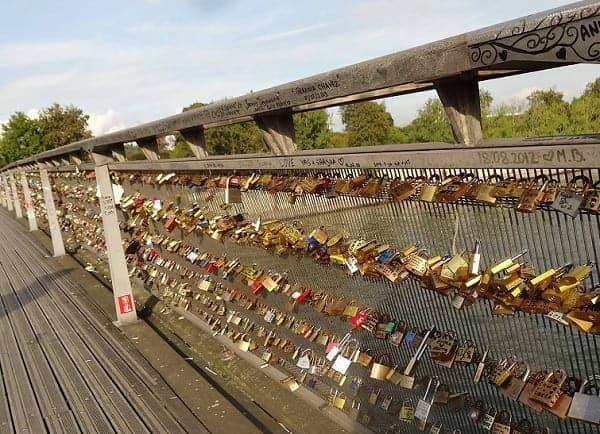
There’s a tradition – purely touristic – of attaching locks to the bridge; you’ll endear yourself to Parisians if you decide not to do this.
18. Louvre Museum and Tuileries Gardens
The Louvre used to be a royal palace, and it’s easy to tell. (See our in-depth post on how to visit the Louvre Museum).
The Louvre remained private after the royalty moved out, and it housed a private collection of art until the Revolution, at which point, in 1793, it was opened to the public.
The open space to the west of the Louvre, centered on a large sculpted hedge, is the Place du Carrousel, and it used to be the location of another royal palace – the Tuileries Palace, destroyed in the late 19th century.
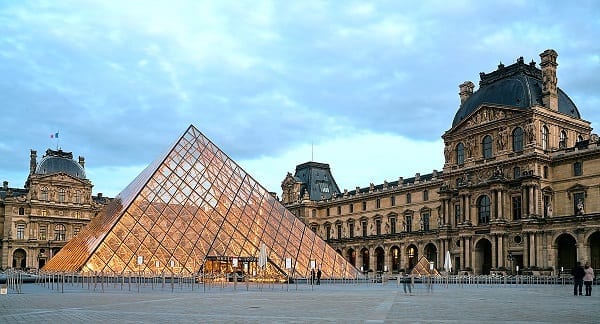
It left behind the arch opposite the Louvre – the Arc de Triomphe du Carrousel, built to celebrate the military victories of Napoleon and to welcome arrivals to that palace.
Beyond it are a couple of stairways, leading down into the former location of the moat, which contains some sculptures from the old palace.
And beyond that is the Tuileries Gardens. At one time an exclusive royal garden, this too became public during the Revolution, and it’s another option for the next part of your adventure.
The gardens have a lot to see – it’s a sculpture garden with about 200 pieces, including several by famous French sculptor Auguste Rodin.
The gardens are bigger than the Louvre, so you could easily find yourself walking further in this park than you have through this entire tour so far!
Luckily, there are a couple of cafes around the middle if you need somewhere to rest.
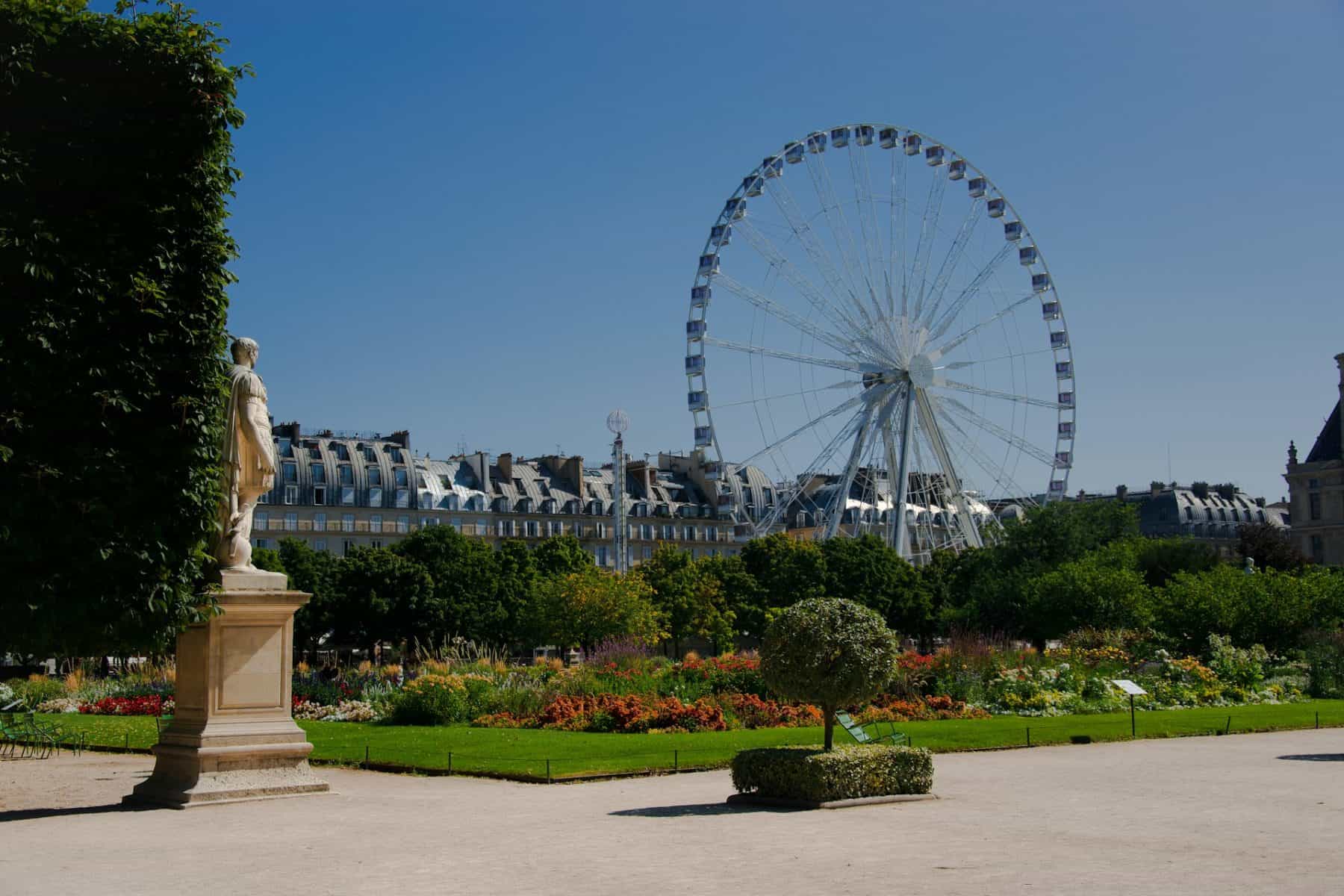
It’s free to enter the gardens and is open every day, with hours changing seasonally.
- January through December 7:30 - 19:30 (7:30 pm)
- June, July and August 7:00 - 23:00 (11:00 pm)
- April, May and September 7:00 - 21:00 (9:00 pm)
At the far end of the gardens is the Jeu de Paume, a contemporary art museum and L'Orangerie museum dedicated to impressionist and post-impressionist paintings.
This magnicient museum is a must-visit in Paris. It's open 9:00 - 18:00 (6 pm) daily, except Tuesdays. Tickets are 12,50€ or free with a Paris Museum Pass.
Beyond these museums are Place de la Concorde and the Champs Élysées, included in our self-guided tour of Paris' Right Bank!
For more ideas in Paris, including things to do in the Latin Quarter, Marais, and Montmartre, check out our website, linked in the notes.
And look for our articles and audio tours about lots of other cities - you’ll find links in the notes for those, too.







